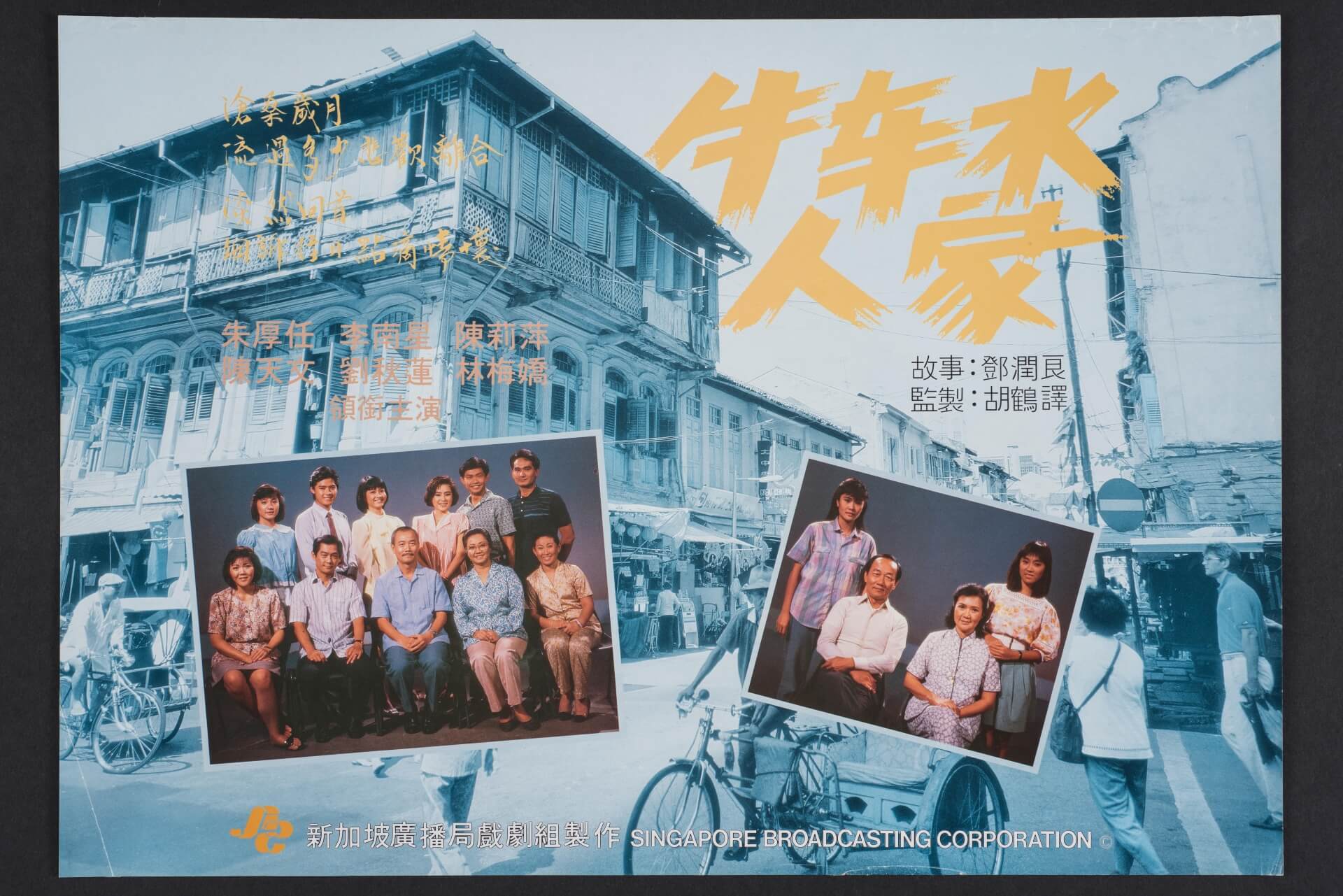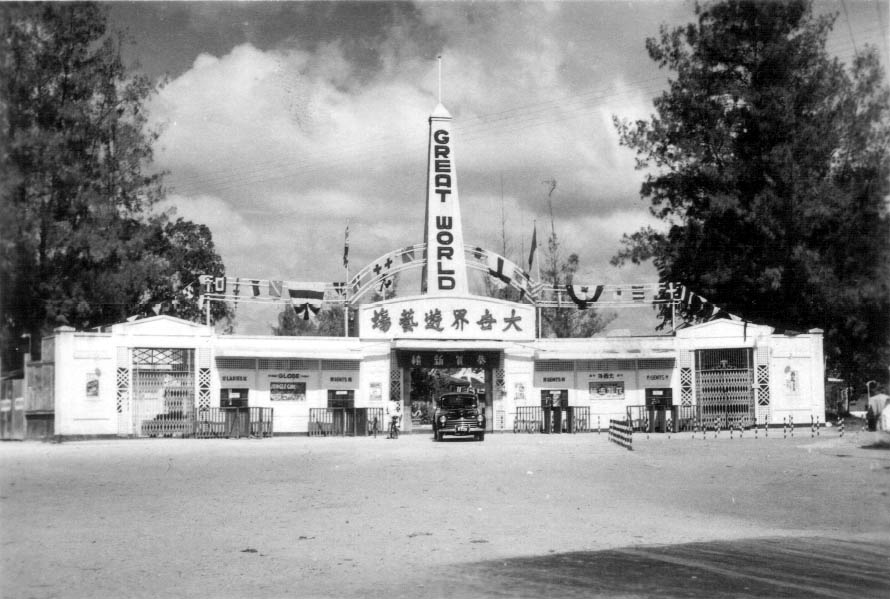Singapore’s Chinese-language films (1927–1978)
The first Chinese movie produced in Singapore was Xin Ke (The New Immigrant),1 a silent film.2 It was a collaborative effort involving Chinese people from different regions — financed and written by Liu Beijin (Low Poey Kim; 1902–1959), the son of Liu Zhuhou (1866–1922), a wealthy businessman from Muar, Malaysia; directed and shot by Guo Chao-Wen from Xiangshan, Guangdong, China; and starring Zheng Chao-Ren (1905–1983) from Hsinchu, Taiwan.
Production of Xin Ke began in 1926, and it premiered on 4 March 1927 at the Victoria Theatre. After a review by the colonial government, only six of the original nine reels were approved for release. Due to poor box office reception and a lack of funds, Singapore’s first film-making dream came to a halt.


Local film production did not resume until 1934. On March 27 that year, Indian director B. S. Rajhans’s (1903–1955) Malay sound film Leila Majnun premiered at the Marlborough Theatre on Beach Road. The film, starring famous bangsawan (Malay traditional opera) actors, was very popular in Malaya and India. Spotting a business opportunity, brothers Runme Shaw (1901–1985) and Run Run Shaw (1907–2014), who were operating movie theatres in many Southeast Asian locations at the time, decided to set up a studio in Jalan Ampas in 1937 to exclusively produce Malay sound films. From 1938 to 1941, the studio recruited the first generation of Chinese directors Hou Yao (1903–1942) and his female student Wan Hoi Ling (birth and death years unknown) to Singapore, where they co-directed eight Malay films from Chinese scripts translated into Malay. With the outbreak of World War II in 1942, local production stopped again.
Post-war recovery
Film production recovered rapidly after the war. In keeping with the zeitgeist, a slew of anti-Japanese works was released. New films in the Chinese language included the news-based feature Malayan Newsreel Collection (1945), the documentary film Glory of Malaya (1946),3 as well as drama films Blood and Tears of the Overseas Chinese (1946), Spirit of Overseas Chinese (1946), and Honour and Sin, also known as Miss Nanyang (1947), which were released by China Motion Film Picture Studio. Not wanting to be left behind, Shaw Brothers released Song of Singapore in 1946, a film about years of hardship in Singapore during the Japanese Occupation directed by Chinese director Wu Cun (1904–1972). Wu Cun went on to direct the Shaw Brothers’ Second Motherland (1947) and Hard Times (1947), two locally-themed Chinese films, before leaving Singapore. It was around this time that the post-war wave of local Chinese-language films came to an end.
Golden age of Malay films
The 25-year period from 1947 to 1972 is regarded as the golden age of Malay films in Singapore. The Shaw Brothers’ Malay Film Productions (MFP), and Cathay-Keris Films, which was jointly established by Loke Wan Tho (1915–1964) and Ho Ah Loke (1901–1982), produced nearly 300 films in total. Although films were in Malay, they involved collaboration between people from the three major local ethnic groups — Chinese producers, Indian directors,4 and Malay actors.
While Malay films were widespread, there were also many locally-produced Chinese-language movies, such as the Hokkien film Love Deep as The Sea (1954) and Lovesickness Sent from Afar (1955); the gezai film Taming of the Princess (1958), the Chinese-Malay bilingual film Sri Menanti (1958), and also the Chinese films Door of Prosperity (1959), My Love in Malaya (1963). The most high-profile of these was The Lion City (1960) written and directed by Yi Shui, who advocated the “Malayanisation of Chinese-language cinema”. Although the film was mainly in Chinese, it was interspersed with Cantonese, Malay, English and other languages. Doing so, Yi Shui put into practice the idea of “Malayanised Chinese-language cinema”, and received a warm response from the local box office.


Post-independence years
After the separation of Singapore and Malaysia in the 1960s, the centre of Malay film production shifted north to Kuala Lumpur. The golden age of Malay films came to an end when Malay Film Productions and Cathay-Keris Films ceased operations in 1967 and 1972 respectively. However, Chinese-language filmmakers in Singapore continued to strive, producing six films in four years from 1974 to 1977: action film Ring of Fury (1974); Cantonese film The Two Nuts (1975); three Chinese films produced by the Zongyi Group: Crime Does Not Pay (1975), Hypocrite (1976), Two Sides of the Bridge (1976), and also Dream of the Red Chamber ’77 (1977) directed by Hong Kong director Yau Kong-Kin (1940–2013). Ring of Fury was banned due to content involving secret societies. Although it was re-edited, the two appeals were unsuccessful. It was not until 2005, when censorship standards became more lenient, that the ban was lifted.
In 1978, the Singapore-Philippines co-production They Call Her Cleopatra Wong was released. Afterwards, the loss of support from two big studios, coupled with factors such as the national economy, poor local box office performance, and the rise of television as the go-to form of entertainment, meant that film production ground to a halt yet again. It remained dormant for over a decade, and it wasn’t until 1991 that local film production resumed, this time with a radically different look.
This is an edited and translated version of 新加坡电影里的华语片(1927-1978). Click here to read original piece.
| 1 | Mention of Chinese or Chinese-language films in this article generally refer to films with Mandarin and Chinese dialects as the primary language. |
| 2 | To adapt to the local language environment, the title cards of this silent film were in both Chinese and English. |
| 3 | Sources from Koh Eng Soon’s Xin ma huawen dianying: 1927–1965 [The Chinese-language films of Singapore and Malaysia: 1927–1965] indicate that Moon Over Malaya captured post-war reality, but scenes of wartime guerrilla warfare against the Japanese army were shot by “enacting” research material. This film should be regarded as a documentary. |
| 4 | In the early period, most of the directors were Indian, and in the middle and later period, Malays and Filipinos also participated in directing. |
Koh, Eng Soon. Xin ma huawen dianying: 1927–1965 [The Chinese-language films of Singapore and Malaysia: 1927–1965]. Singapore: Xu yongshun gongzuo ting, 2015. | |
Koh, Eng Soon. Xinjiapo dianying jie ji yao: 1965–1983 [Chronicles of the Singapore film industry: 1965–1983]. Singapore: Xu yongshun gongzuo ting, 2013. | |
Uhde, Jan and Udhe, Yvonne Ng. Latent Images: Film in Singapore, 2nd ed. Singapore: Ridge Books, 2010. | |
Uhde, Jan and Udhe,Yvonne Ng. Xin ke: Xin ma shou bu changpian dianying de gushi [New immigrant: The story of Singapore and Malaysia’s first full-feature film]. Singapore: Kucinta Books, 2019. | |
Uhde, Yvonne Ng and Udhe, Jan. Xin Ke: The Story of Singapore and Malaya’s First Feature Film. Singapore: Kucinta Books, 2019. |










